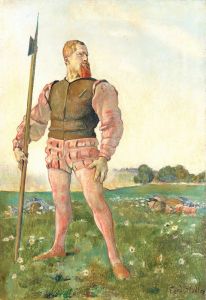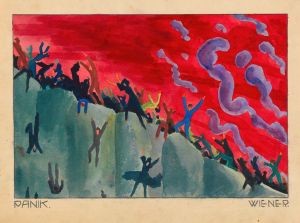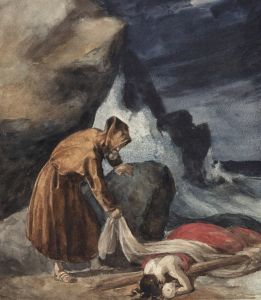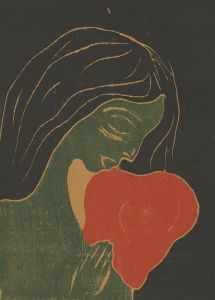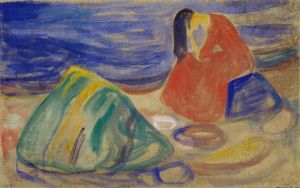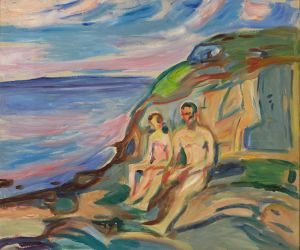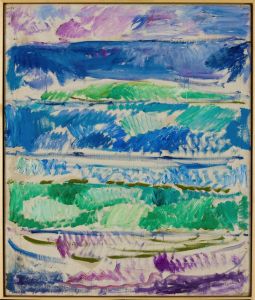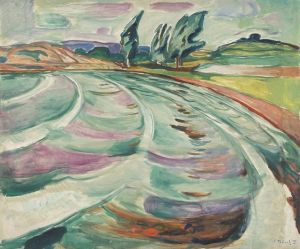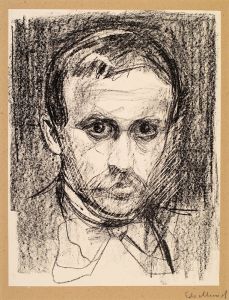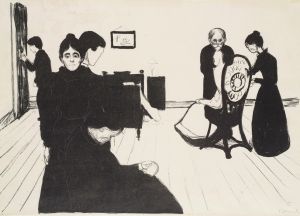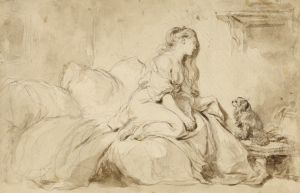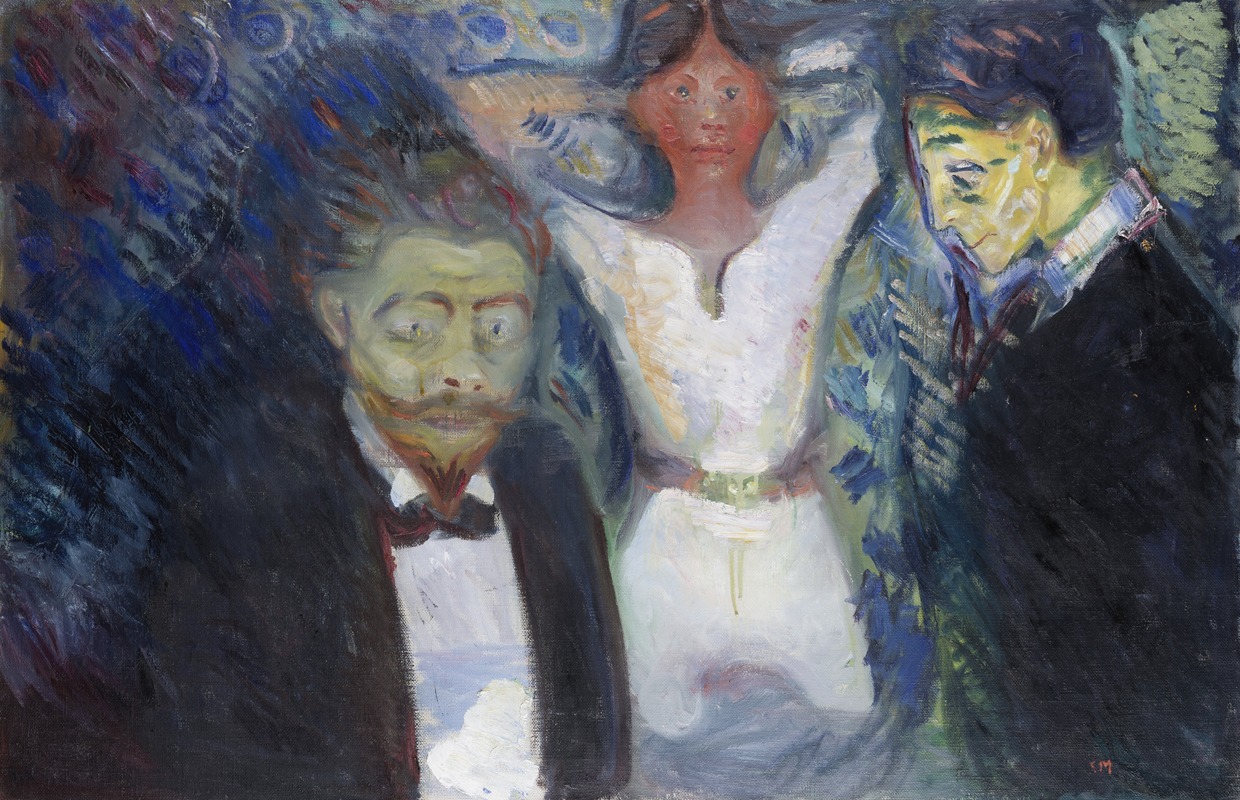
Jealousy
A hand-painted replica of Edvard Munch’s masterpiece Jealousy, meticulously crafted by professional artists to capture the true essence of the original. Each piece is created with museum-quality canvas and rare mineral pigments, carefully painted by experienced artists with delicate brushstrokes and rich, layered colors to perfectly recreate the texture of the original artwork. Unlike machine-printed reproductions, this hand-painted version brings the painting to life, infused with the artist’s emotions and skill in every stroke. Whether for personal collection or home decoration, it instantly elevates the artistic atmosphere of any space.
"Jealousy" is a painting created by the Norwegian artist Edvard Munch, who is widely recognized as a pioneer of modern expressionism. The artwork was first painted in 1895 and is one of several versions Munch created under the same title. Like many of Munch's works, "Jealousy" explores themes of human emotion, particularly those associated with love, desire, and psychological turmoil.
The painting depicts a dramatic scene involving three figures. In the foreground, a man stares directly at the viewer with an intense, almost accusatory expression. His face is marked by anguish, which has often been interpreted as a representation of jealousy. Behind him, a man and a woman are engaged in an intimate moment, with the woman partially nude. The composition and the emotional tension between the figures reflect Munch's interest in the complexities of human relationships and the darker aspects of the human psyche.
"Jealousy" is part of Munch's broader series of works known as "The Frieze of Life," which he described as a "poem about life, love, and death." This series includes some of his most famous paintings, such as "The Scream," "Madonna," and "The Dance of Life." Through these works, Munch sought to capture universal emotions and existential themes, often drawing from his own personal experiences and struggles.
The painting is notable for its use of bold colors and expressive brushwork, which are characteristic of Munch's style. The stark contrasts and the dramatic interplay of light and shadow heighten the emotional intensity of the scene. The figures are rendered in a somewhat distorted and symbolic manner, emphasizing their psychological states rather than their physical realism.
"Jealousy" has been interpreted as reflecting Munch's own experiences with love and relationships, though the artist himself did not provide specific explanations for the painting. Munch's works often invite viewers to engage with their own interpretations, as he believed that art should evoke emotions and provoke thought.
Today, "Jealousy" is considered an important example of Munch's exploration of emotional and psychological themes. It is held in high regard as part of his contribution to modern art and his influence on later movements, such as expressionism and symbolism. One version of the painting is housed in the Munch Museum in Oslo, Norway, which is dedicated to preserving and showcasing the artist's legacy.





